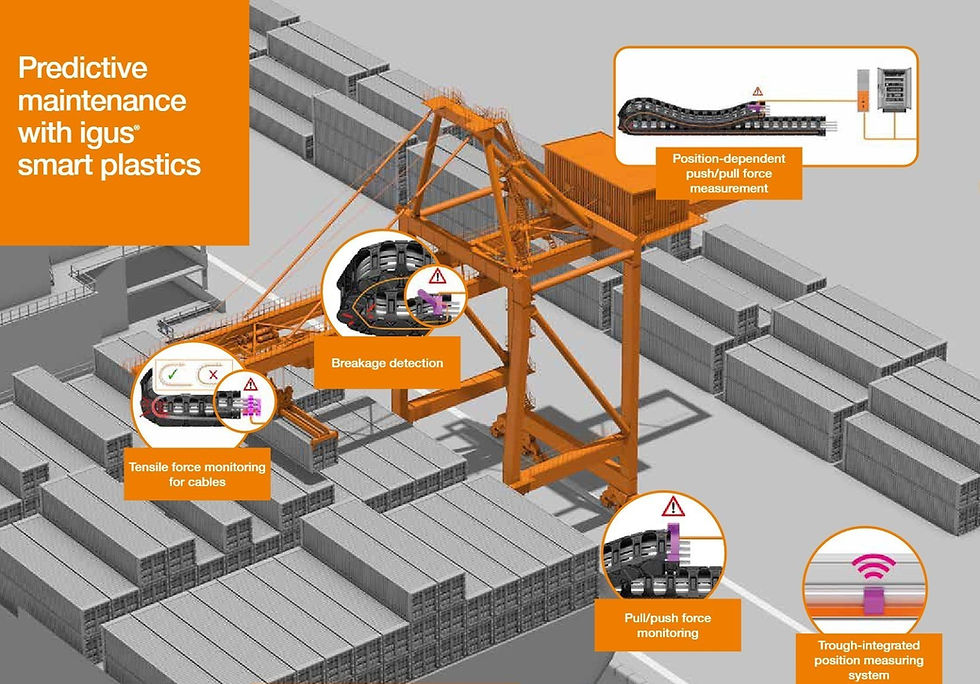Application of Short-wave Infrared (SWIR) Imaging in the Semiconductor Industry
- Automate Asia Magazine

- Sep 13, 2023
- 4 min read
By Jens Hashagen, Product Manager, Allied Vision Technologies GmbH.

Short-wave infrared (SWIR) cameras open up numerous possibilities for machine vision solutions since they detect invisible product flaws as well as specific material characteristics: In contrast to mainstream machine vision cameras with CMOS or CCD sensors, most SWIR cameras have an InGaAs (Indium Gallium Arsenide) sensor and typically detect wavelengths between 900 nm and 1,700 nm.
Newer sensors also support a spectral range extension to the visible or beyond 1.700 nm up to 2.500 nm. Wavelengths beyond 750 nm are invisible to the human eye and CCD or CMOS cameras can detect light only up to ~1050 nm. Thus, the application fields for SWIR cameras are much broader, for example, water accumulations inside plants or defects within silicon products.
The semiconductor industry has become one of the largest industries in the world and continues to expand. Manufacturing integrated circuits (ICs or chips) on thin silicon discs (wafers) is at the heart of this industry.
Cameras with InGaAs sensors typically operate in the SWIR spectral range between 900 nm and 1,700 nm and can image through semiconductor materials such as silicon (Si) at wavelengths around 1,150 nm. Thus, they are an essential part of the inspection process. The ability to image through Si provides a nondestructive inspection method with great benefits for the production process. Today, the semiconductor industry integrates InGaAs cameras into testing, inspection,
and quality control systems.
Silicon crystal and ingot brickinspection
Inspecting silicon crystals and ingots (also called bricks) is one of the classic applications for InGaAs cameras in the semiconductor industry. The ability to see through silicon at a wavelength range above 1,150 nm makes InGaAs cameras a well suited solution for detecting inclusions such as impurities within a crystal or ingot, which can accumulate during the production process. The impurities are critical when sawing the ingots into thin wafers with a special diamond chain. If the chain strikes an inclusion such as a small piece of metal, the extremely expensive chain can break. Not only does replacing a chain carry a cost but also leads to lower productivity and reduced profit. A SWIR camera can prevent this situation and thus ensure a smooth production process.

Wafer inspection or packaging
Another important application for SWIR cameras is the wafer inspection. During the manufacturing process of wafers, particles may occur on the top, at the bottom, and even inside or between the wafers. Whereas CCD or CMOS cameras detect particles on the top and at the bottom, InGaAs cameras see through the silicon and therefore detect particles between two bonded wafers. InGaAs cameras are also used for wafer packaging, where the alignment of the backside pattern to the front side of the wafer is conducted. The SWIR technology helps align layers of wafers as well as align other sub-products such as ICs, memory cells, or transistors along the entire supply chain.
Photovoltaics
SWIR cameras can cover the inspection process of the whole supply chain from the silicon crystal to the ingots/bricks, wafers, solar cells, and finally the solar modules. Since InGaAs cameras image through silicon, they are the most effective solution to detect physical defects within the silicon. Besides SWIR imaging, which is a recent inspection technology, other important technologies, and methods are common within the photovoltaics industry: Photoluminescence (PL) and electroluminescence (EL) are the usual methods for inspection purposes.
PL imaging uses optical excitation (for example, laser illumination) to generate electron-hole pairs, which cause emissions by radiative recombination and thus can be detected by the camera. The band-toband emission around 1,150 nm provides information on defects and dislocation clusters inside the silicon. Moreover, mapping the defect-band luminescence at around 1,550 nm delivers results regarding the limit of the final cell efficiency.
Therefore, the detection sensitivity of the InGaAs camera from 900 nm to 1,700 nm suits the application perfectly. In contrast, electroluminescence is the result of the radiative recombination of electrons and holes in the silicon. Voltage is applied to the solar cell, which leads to the recombination of the available holes. The result is the emission of photons depending on the band gap of the absorber material (silicon 1,150 nm).
Besides crystalline silicon, other types of solar cells or module materials (also called thin film solar) can be inspected: Copper indium gallium diselenide (CIGS) is inspected at a wavelength of 700 nm to 1,330 nm (depending on the indium/gallium ratio) and copper indium diselenide (CIS) at a wavelength of 1,330 nm.
The main advantage of SWIR over CCD and CMOS cameras is the shorter exposure time with excellent quantum efficiency (QE) at the prime silicon emission wavelengths ensuring a quick characterization during the manufacturing process. CCD or CMOS cameras need longer exposure times of up to 30 seconds. Even NIR-enhanced CCD sensors need exposure times of up to 3 seconds or more. In contrast, SWIR cameras need only a few milliseconds and thus significantly accelerate production.

Allied Vision Alvium and Goldeye SWIR Cameras
Allied Vision has many years of experience in the development of shortwave infrared cameras with InGaAs sensor technology. With this comprehensive expertise, Allied Vision provides optimized cameras with outstanding image quality in terms of homogeneity, dynamics, and linearity for a wide range of applications. The current product portfolio includes models with and without thermoelectric sensor cooling.
For scientifically-oriented applications, cameras with two-stage thermoelectric sensor cooling (TEC2), nitrogen cooling chamber, and fan are also available, which enable particularly low-noise image acquisition with long exposure times. Alvium SWIR cameras support a spectral range from 400 nm to 1700 nm at high quantum efficiencies. This allows to capture images in both the visible and SWIR spectra with a single camera and enables users to reduce overall system costs.

Goldeye SWIR cameras enable us to see beyond the visible at very high frame rates and to capture low-noise images with high linearity and dynamic range. Thereby comprehensive onboard image correction and optimization features help to get the best possible imaging results, reproducible at any time due to the integrated sensor temperature stabilization, which is very suitable for both scientific and industrial applications.
SWIR camera applications can also be widely used in several fields such as material sorting, recycling, metal and glass inspection, agriculture, laser beam profiling, and airborne remote sensing. To understand more, please download our whitepaper “Short-wave infrared (SWIR) cameras offer versatile application fields in machine vision”.






-01.jpg)


